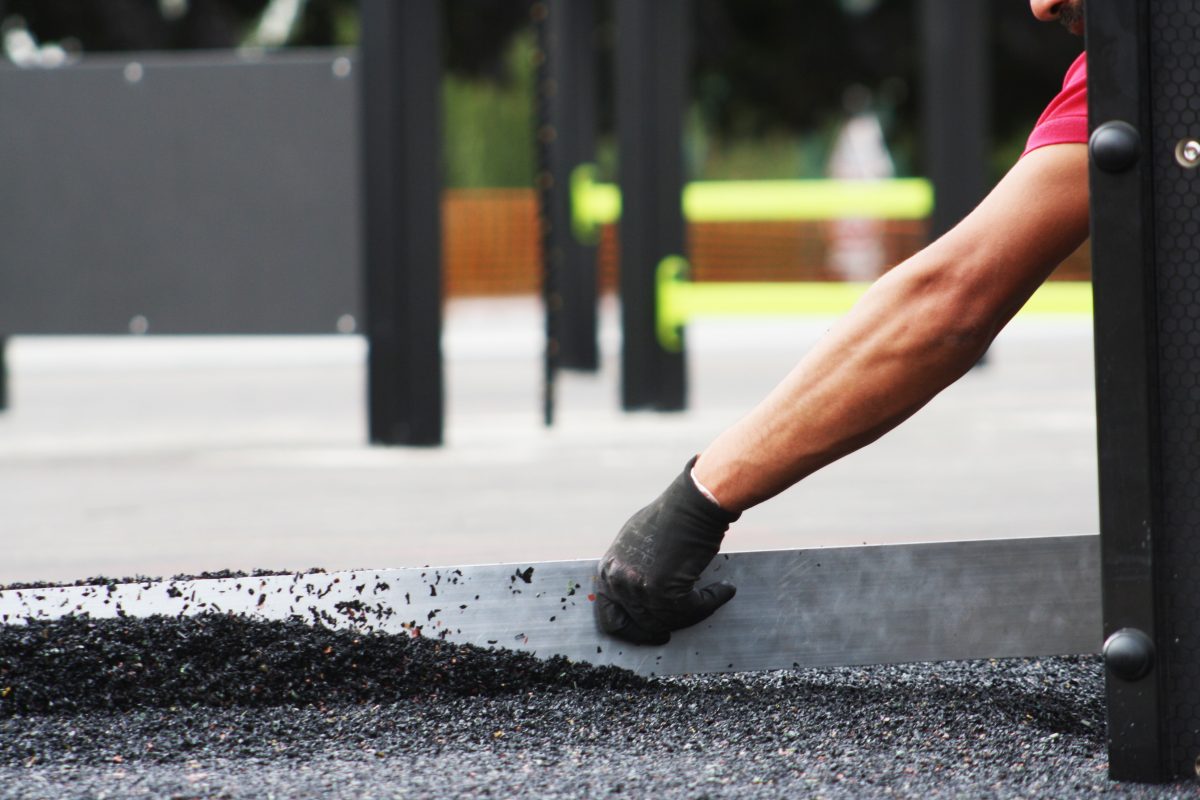3 Popular Playground Surfaces
Designing a safe playground starts from the ground up. It’s essential to have safe playground equipment, but the surface under the equipment also makes a big difference. The floor covers how accessible and safe the playground is and how enjoyable it is for children to play.
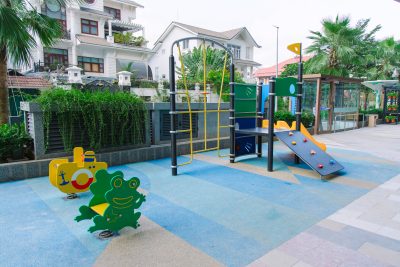
There are many possible safety surfaces for playgrounds, each with pros and cons. There are two main groups of surface coverings: loose-fill and unitary.
Loose-fill coverings are made of smaller pieces, such as engineered wood fiber or rubber mulch, that are installed to create an even surface made of loose parts. These surfaces are typically less expensive to install but require more maintenance and refills.
Unitary surfaces are comprised of superior materials installed into a level surface. These surfaces are more expensive to install but require less maintenance in the long run.
When choosing a playground surface, several factors include price, accessibility, and maintenance. Some materials are less expensive to install but don’t provide accessibility and require more involved care.
On the other hand, some surface materials have a high up-front cost but don’t require as much maintenance over time and provide a consistently safe environment.
When designing a commercial playground, here are the five best types of safety surfaces. These surfaces are a great option to put in a playground area. The choice is based on what is best for the individual park and project.
Poured-In-Place Rubber (EPDM Rubber)
Poured-In-Place, also called poured rubber or PIP, is a smooth layer of rubber poured to cover the entire surface evenly. Poured rubber is a 2-layer system that includes a shock-absorbing layer of rubber buffings, surrounded by a top finish layer of granular particles mixed with binder. It creates a uniformly smooth surface that ages well.
Because of its even surface, poured rubber allows for great accessibility and impact attenuation. It is a popular option for playgrounds because it provides a safe covering for all children and nearly every activity. Poured rubber is also long-lasting and requires minimal maintenance.
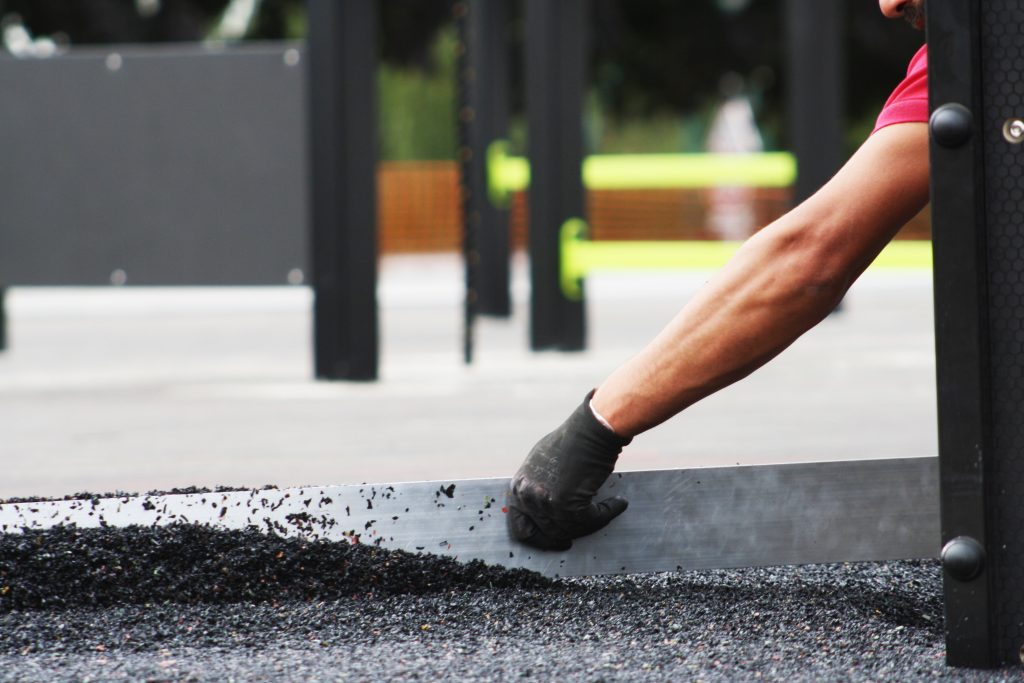
Poured-In-Place, also called poured rubber or PIP
It is customized to match the colors and style of any playground. It is the most customizable surface option because it can be poured with graphics into nearly any pattern or design and add to the creativity and imagination of the playground.
The most significant disadvantage of poured rubber is the price, as it tends to be one of the most expensive playground surfacing options. Over time, poured rubber can also wear down as it is exposed to the elements and start to crack or flake, although this usually takes many years of heavy use to occur.
Turf
Side view of artificial turf used for playground turf is a standard surface for sports fields and a safe unitary surface for playgrounds installed with an impact attenuating pad.
Turf has the appearance of natural grass, but it is much easier to maintain and safe for children to play on under elevated equipment. The playground gets a touch of greenery with turf without fertilizing, mowing, or watering the grass.
Turf can absorb the fall height rating of play equipment because there is a cushion layer underneath the grass-like layer. It is also UV resistant, which means the color is resistant to fading over time. Turf is much more durable than natural grass and can withstand years of serious play.
A downfall of turf is the price, as it can be expensive to install. Some turf contains quartzite or rubber granules called infill between the plastic blades of grass to prevent the edges over time. Infill material can displace over time and make it more challenging for children to run and play on surfaces when it may spill over.
Turf with infill shouldn’t be used in playgrounds for infants and toddlers. There are non-infill options available. However, non-infill turf can look less natural and flatten over time.
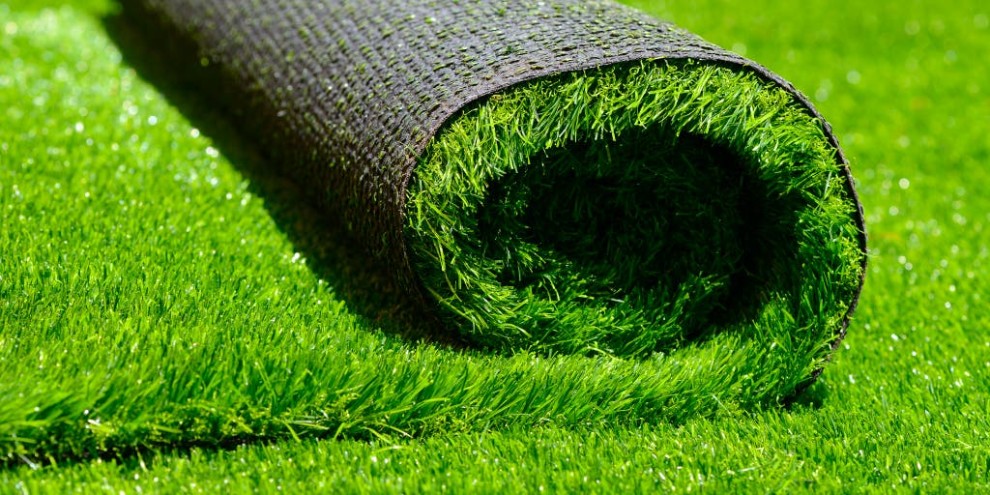
Turf with infill shouldn’t be used in playgrounds for infants and toddlers
Rubber Tile
Rubber tile on a playground in alternating colors. Rubber tile is a popular option for gardens because it is customizable and safe. Rubber tiles are bonded rubber in pre-formed square tiles, typically 2 feet by 2 feet.
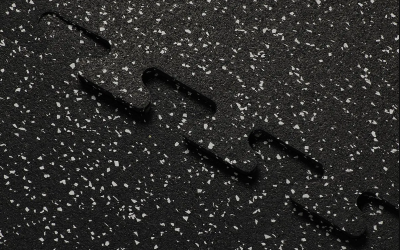
Rubber tile on a playground in alternating colors
Like other types of tile, the individual pieces are then placed on the ground in a pattern with interlocking sides to join them together.
The main advantage of rubber tile is that it is very accessible. Because it creates an even and smooth surface, it can easily be maneuvered by children of all ability levels, including children in wheelchairs.
Rubber tiles come in different degrees of thickness to meet the fall height attenuation of the specific play equipment.
Rubber tile also comes in various colors and can create fun and bright patterns. On the other hand, rubber tile tends to be more expensive to install. It is best to install tiles over a concrete base for stability and reduce shifting over time.
Even over concrete, tiles can start to separate and peel at the edges with age, creating a tripping hazard. However, because the surface is made of tiles, if one area starts to erode, just those tiles can be replaced, making repairs easier and decreasing replacement costs in the long run.
Rubber tiles require a medium amount of upkeep, basically requiring removal of dirt from in between the tiles and regularly sweep and cleaning and surface. Animals don’t find rubber tile appealing, which minimizes the chance of bugs or other vermin staying on the playground and causing damage.
Get Yours Now
If you have the surface project that you would like to discuss with us then please contact us by email [email protected]


